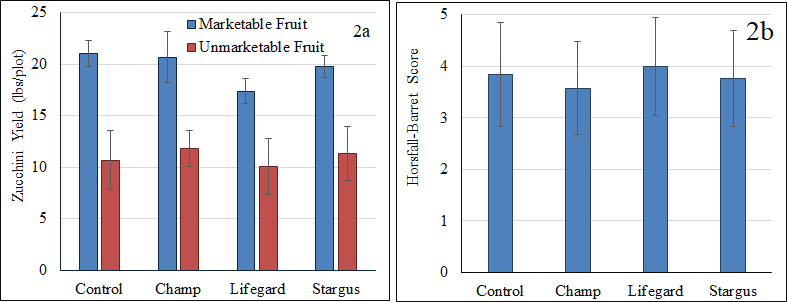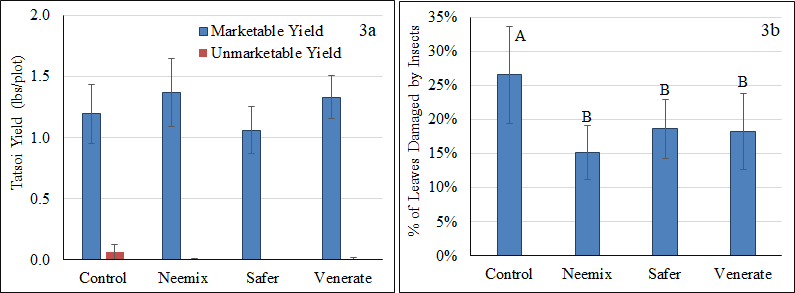by Gena Moore, CFSA Organic Research Coordinator, and Mark Dempsey, CFSA Farm Services Manager | Thursday, Apr. 29, 2021 –
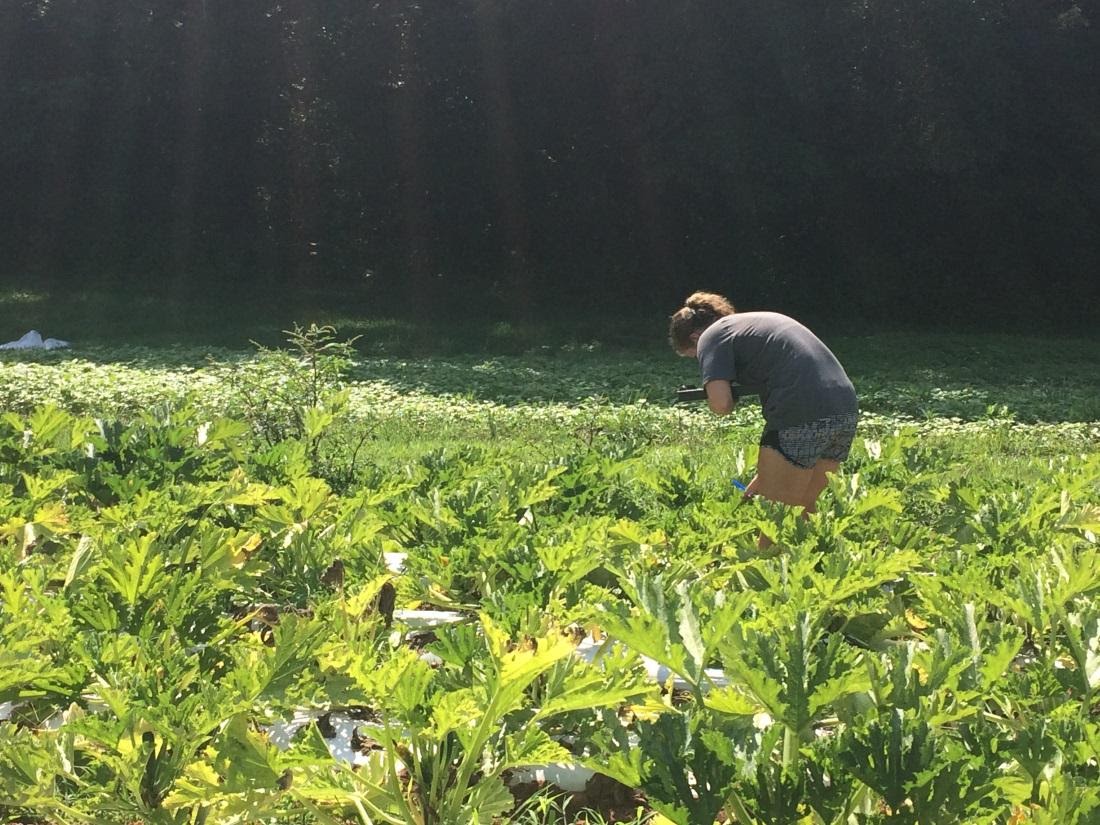
RESEARCH OVERVIEW
- The effectiveness of commercially available organic pesticides was evaluated at the Elma C. Lomax Research and Education Farm.
KEY RESULTS
- Ecoblend® and Avenger® were very effective at reducing surrogate weeds of grain amaranth and Japanese millet (99% reduction), while AllDown® was less effective (ca. 69% reduction) compared to the untreated control.
- Champ® WG, Stargus® (Bacillus amyloliquefaciens), and LifeGard® (Bacillus mycoides) did not control fungal diseases on zucchini better than the untreated control.
- Neemix® 4.5 (neem oil), Venerate® (Burkholderia spp), and Safer® Insecticidal Soap reduced leaf damage from insects but there were no significant differences for marketable, unmarketable, and total yields compared with the untreated control.
INTRODUCTION
Pest management is routinely identified as a key obstacle in organic production. While preventative practices and other Integrated Pest Management (IPM) techniques can reduce pest pressure when thresholds are met commercially available pesticides approved for use in certified organic production can be used. One option is the use of naturally-derived pesticides, also called biopesticides. Many specialty crop growers prefer to use biopesticides because they are typically less toxic than conventional pesticides to humans and the environment. However, independent research regarding the efficacy of many of these products is lacking. The objective of this project was to evaluate the efficacy of several types of biopesticides to control insect, weed, and disease pests in organic specialty crop production. The research was conducted at the Elma C. Lomax Research and Education Farm (Lomax) in 2018 and 2019.
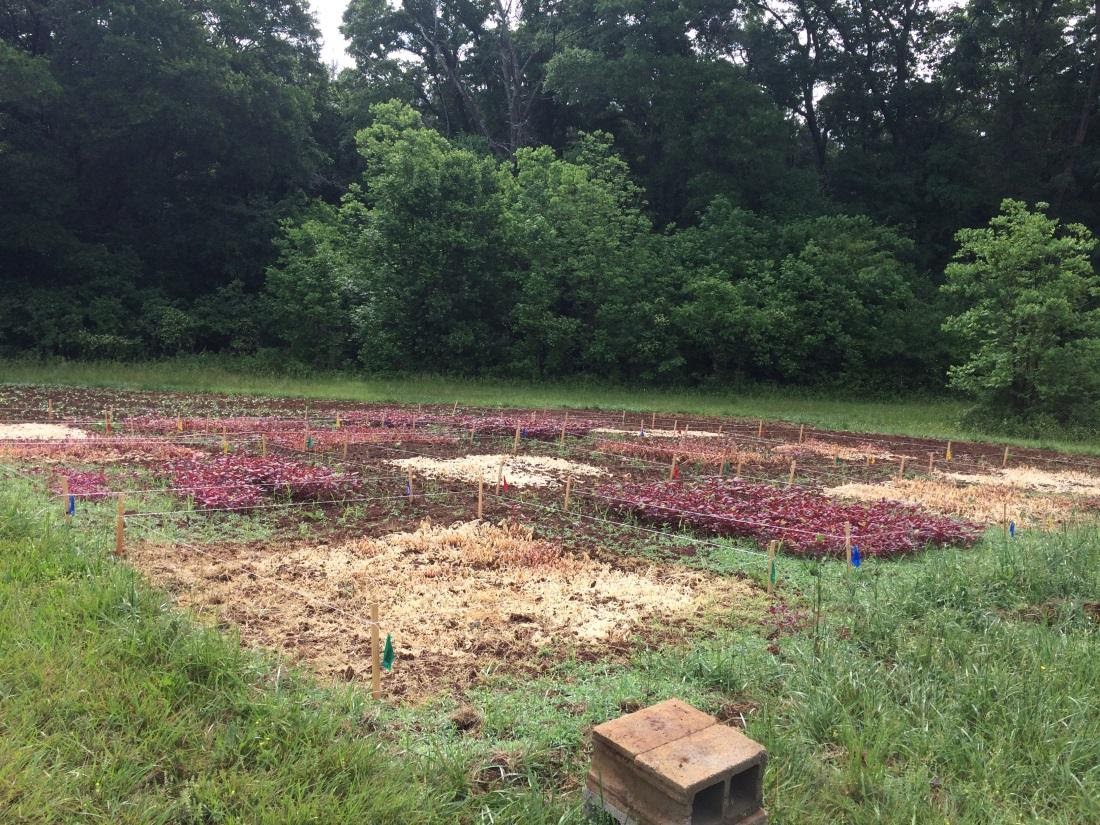
Herbicide study plots following pesticide applications
METHODS
Herbicide trials were conducted from April 20 to May 12, 2018, and April 18 to June 18 2019. Grain amaranth (Amaranthus hypochondriacus L.) and Japanese millet (Echinachlo crus-galli var. frumentacea L.) were seeded in beds at a rate of 500 seeds m2 because they closely resemble common weed species, redroot pigweed (Amaranthus retroflexus) and barnyard grass (Echinochloa crus-galli). Herbicide treatments include a control (no foliar spray), All Down® (acetic and citric acid), Avenger® (d-limonene oil), and EcoBlend® (vegetable oil). Products were applied according to manufacturer recommendations beginning mid-April and occurred weekly through May. Weed counts were taken weekly from two randomly placed 0.5m2 quadrats within each plot. At the end of the experiment, all weeds from two random quadrat locations were clipped at ground level, bagged by type, dried, and weighed.
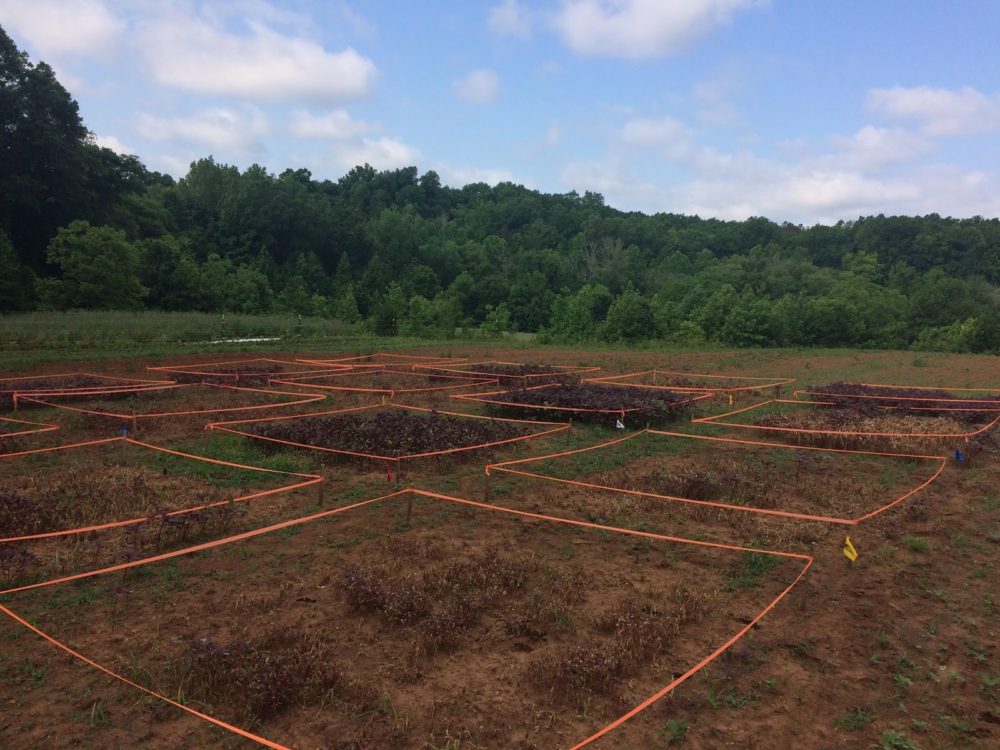
Herbicide treatment plots after initial treatment of organic herbicides
Fungicide trials were conducted from May through July. Dunja zucchini (Cucurbita pepo) seeds were started in the greenhouse in April and transplanted in May on plastic mulch with drip irrigation. Treatments included a control (no foliar spray), Champ® WG (copper hydroxide), Stargus® (Bacillus amyloliquefaciens), and LifeGard® (Bacillus mycoides). Products were applied according to the manufacturer’s recommendations in July of both years after disease symptoms were observed. Disease severity ratings were taken weekly using a modified version of the Horsfall and Barratt scale. Data on marketable versus non-marketable fruit yield was collected.
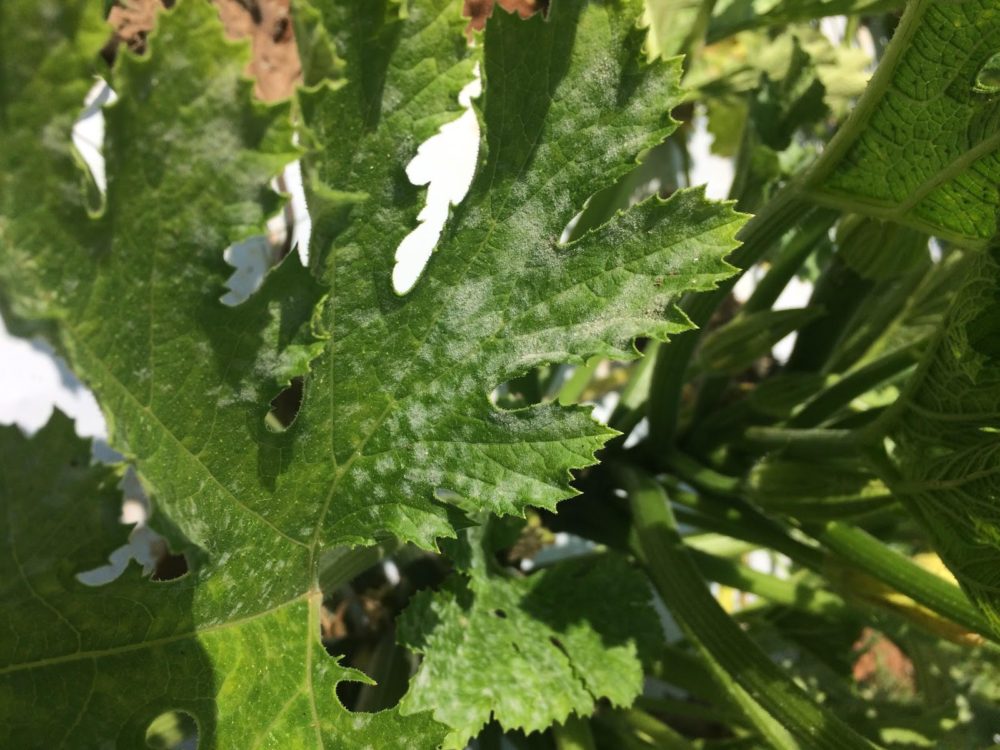
Powdery mildew identified on Dunja zucchini leaves in fungicide treatment plots
Insecticide trials were conducted from September through October. Tatsoi (Brassica rapa var. narinosa) were started in the greenhouse in August and transplanted in September into bare ground. Treatments included a control (no foliar spray), Neemix® 4.5 (neem oil), Venerate® (Burkholderia spp), and Safer® Insecticidal Soap (insecticidal soap). Products were applied shortly after planting according to manufacturer recommendations. Insect scouting was conducted weekly and all plants were harvested. Marketable and unmarketable weight recorded.
All data were analyzed by Mixed Effects Model ANOVA, and differences among treatments were tested by Least Squares Means (at P < 0.05) using R v3.6.1.
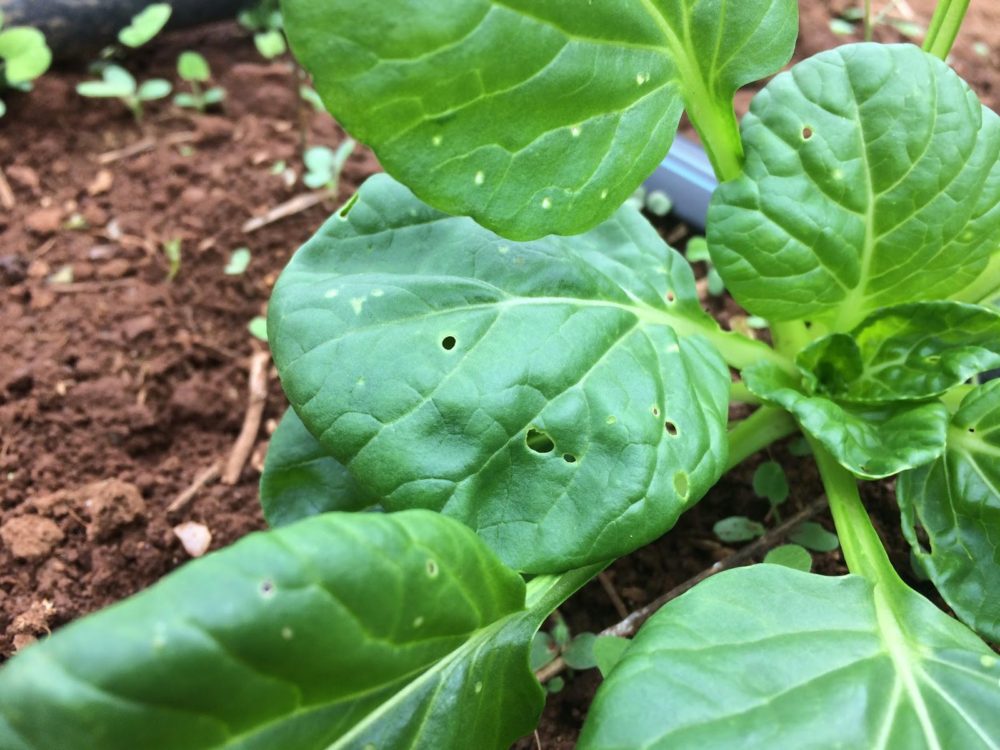 Insect damage observed on Tatsoi in insecticide treatment plots
Insect damage observed on Tatsoi in insecticide treatment plots
RESULTS & CONCLUSIONS
Herbicide Trial
Generally, Avenger® and EcoBlend® herbicides were more effective at controlling weeds compared to All Down®. Specifically, weed density, percent cover, and biomass were significantly lower in plots treated with Avenger® and EcoBlend® compared to control (untreated) plots, whereas these measures of weed abundance in plots treated with All Down® were not consistently lower than those in control plots (Figure 1).
Figure 1. Weed abundance measured by three metrics (final sampling date): mean weed density (per m2; 1a), percent cover (1b), and biomass (kg/ha; 1c) averaged across both years. Different letters indicate significant differences (p < 0.05) for each metric. Error bars are standard error of the mean.
Fungicide Trial
There were no significant differences in marketable, unmarketable, and total zucchini yields among treatments in either year (Figure 2a; marketable yield shown), and no differences in the Horsfall-Barrett scores among treatments on any sampling date (Figure 2b).
Figure 2. Mean marketable zucchini yields (lbs/plot; 2a), and Horsfall-Barrett scores (final sampling date; 2b) averaged across both years. There were no significant differences among treatments. Data from both years were pooled due to the non-significant interaction between year and insecticide treatment for each metric. Error bars are standard error of the mean.
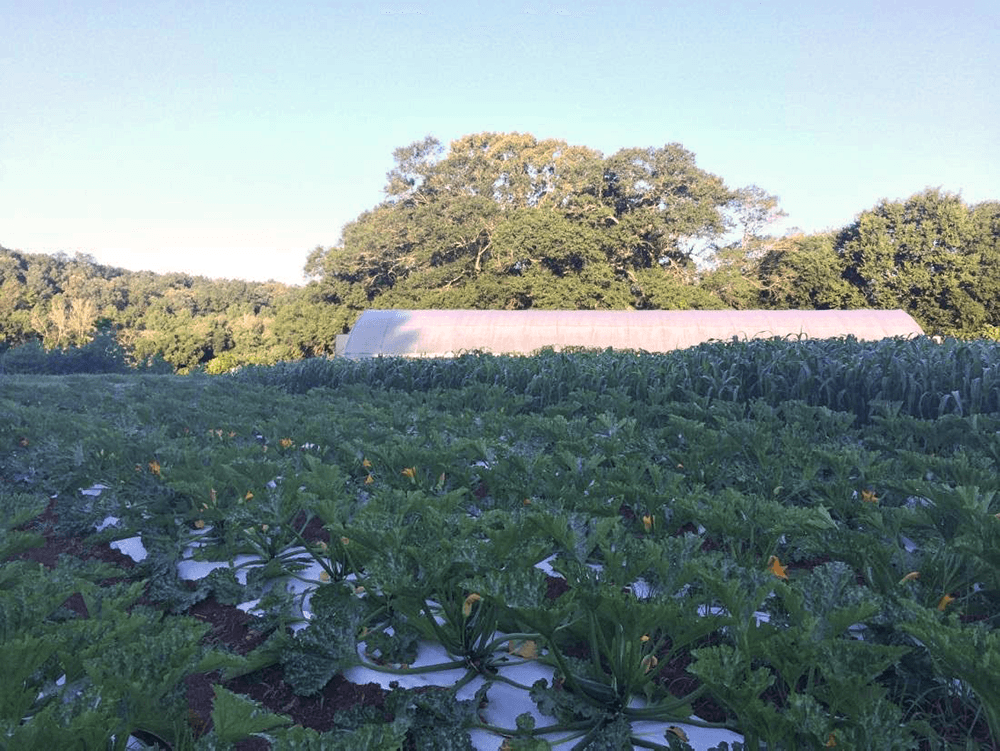 Fungicide plot with Dunja zucchini
Fungicide plot with Dunja zucchini
Insecticide Trial
Tatsoi yields in both years did not differ among treatments: both marketable and unmarketable yield (Figure 3a), as well as total yield (data not shown), were statistically identical among treatments, including control (untreated) plots. Leaf damage from insects was lower among insecticide treatments compared to control plots (Figure 3b). It is noteworthy that, despite higher insect damage ratings in control plots, marketable tatsoi yields were not significantly higher in plots treated with insecticide; this is because the threshold for unmarketable tatsoi in this study was approximately 35% damaged leaves. If this threshold was lowered (e.g., 25%), it’s possible that marketable yields would have been higher in the insecticide-treated plots compared to control plots.
Figure 3. Mean tatsoi yields (total lbs/plot; 3a) and insect damage to leaves averaged across sampling dates (3b) averaged across both years. Where letters are shown, different letters indicate significant differences (p < 0.05) for each metric; otherwise, there were no significant differences among treatments. Error bars are standard error of the mean.
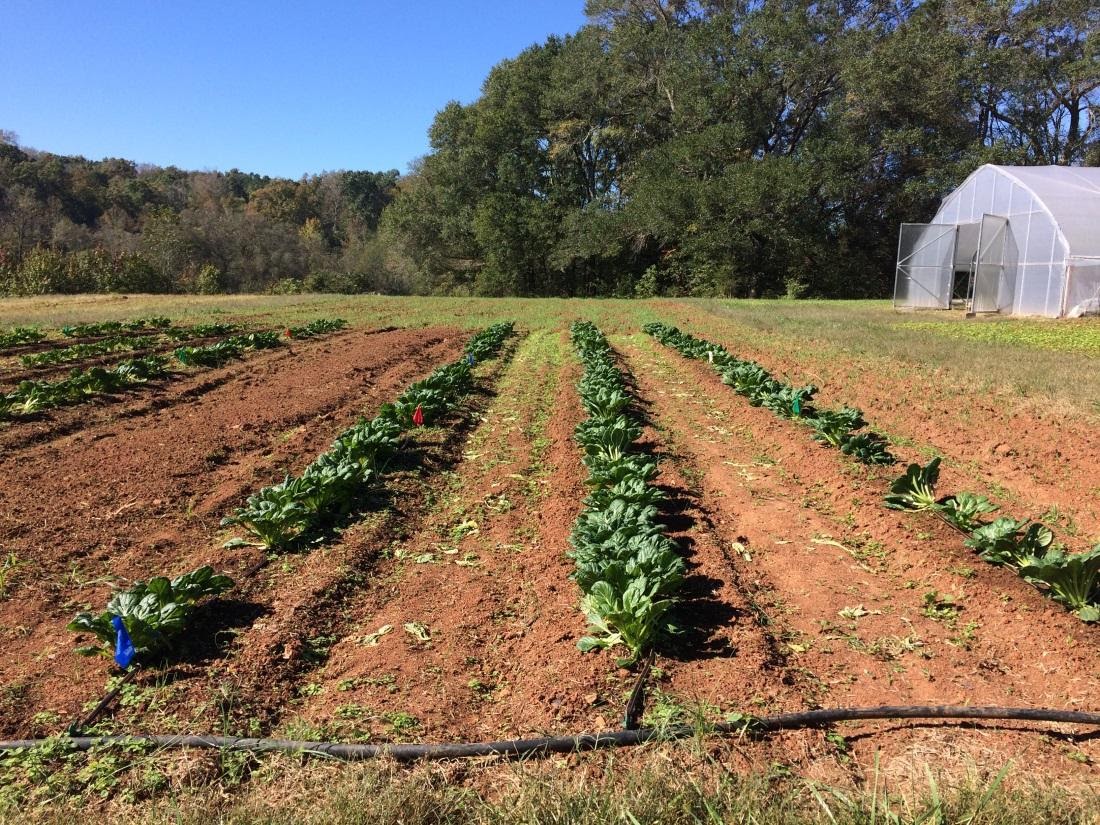
Insecticide plot planted with tatsoi
CONCLUSION
Results indicate that Ecoblend® and Avenger® reduced weed abundance more than All Down® (Figure 1). This may have been because label specifications enabled both Ecoblend® and Avenger® to be sprayed on a weekly basis while All Down® needed a 14-day interval between applications. Regardless, if you’re hoping to effectively control weeds using an organic herbicide, our study indicates that you use Avenger® and EcoBlend® and avoid using All Down®.
Many preventative measures were taken to prevent disease during the fungicide trial, per certified organic requirements. Preventative measures included: a disease-resistant hybrid used (Dunja F1 zucchini), plastic mulch, and drip irrigation. The generally low disease pressure across all plots may have been due, in part, to these measures. Insect pressure during the fungicide trial was moderate, however, and much of the plant damage was due to squash bugs (Anasa tristis). Many fungicide treatments, organic and conventional, are better used as preventative measures, however per the organic certifiers’ recommendation, applications were not begun until disease (powdery mildew) was identified.
During the insecticide trial, pest thresholds were met immediately following transplanting due to high insect pressure. Insects observed included armyworms (Spodoptera frugiperda) and black cutworms (Agrotis ipsilon). Unidentified adult lepidopterans were also observed on plants. All insecticides used were classified as “broad spectrum” or suitable for controlling a variety of insects. Results indicate no difference in tatsoi yields despite a reduction in leaf damage (Figure 3), given the relatively high tolerance for insect damage to be categorized as marketable (35%).
Want More? Have Questions?
- Peruse more of CFSA’s organic research
- Get in touch with the post authors:
- Gena Moore: gena@carolinafarmstewards.org
- Mark Dempsey: mark@carolinafarmstewards.org
This research was funded by a Specialty Crop Block Grant awarded by the North Carolina Department of Agriculture and Consumer Services.




